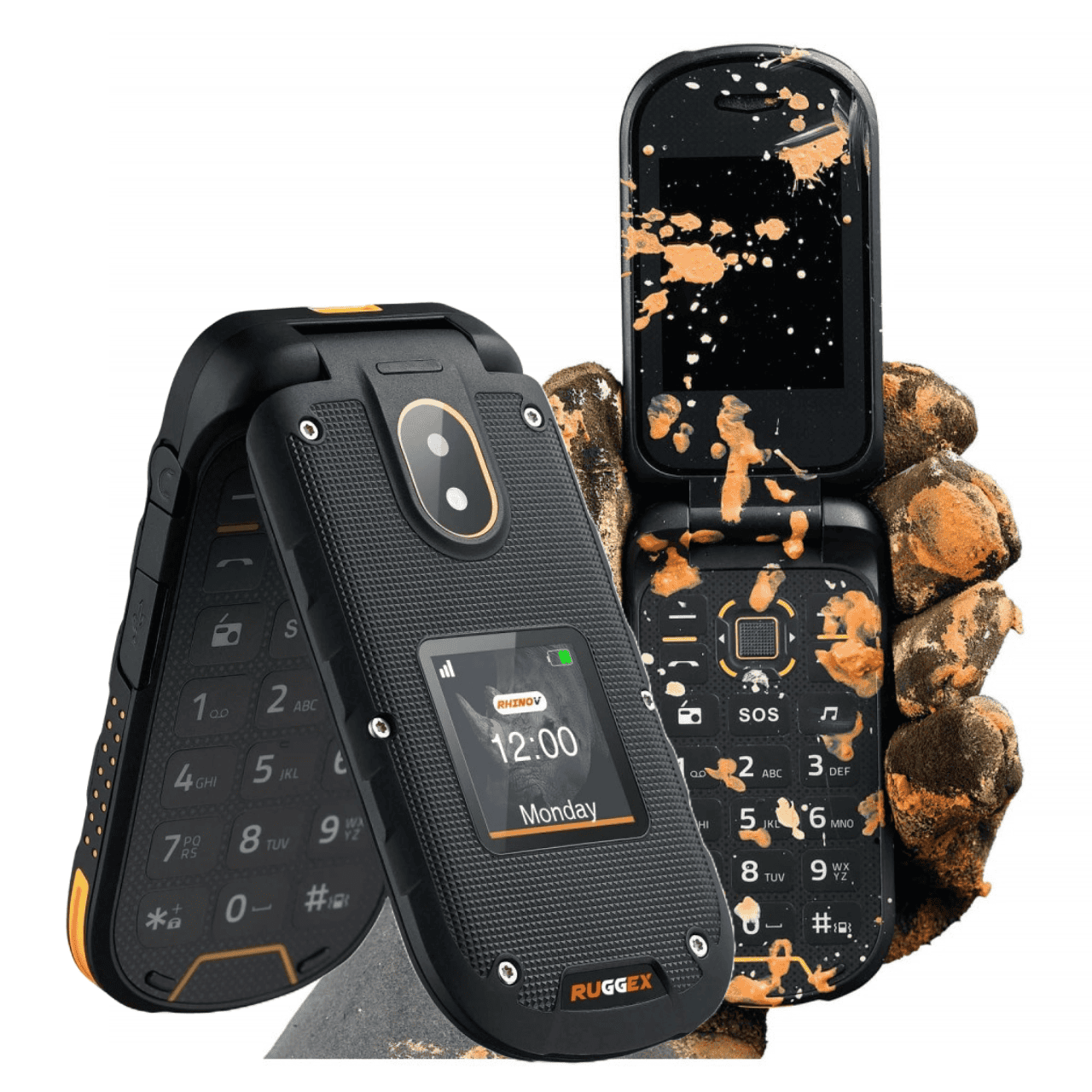

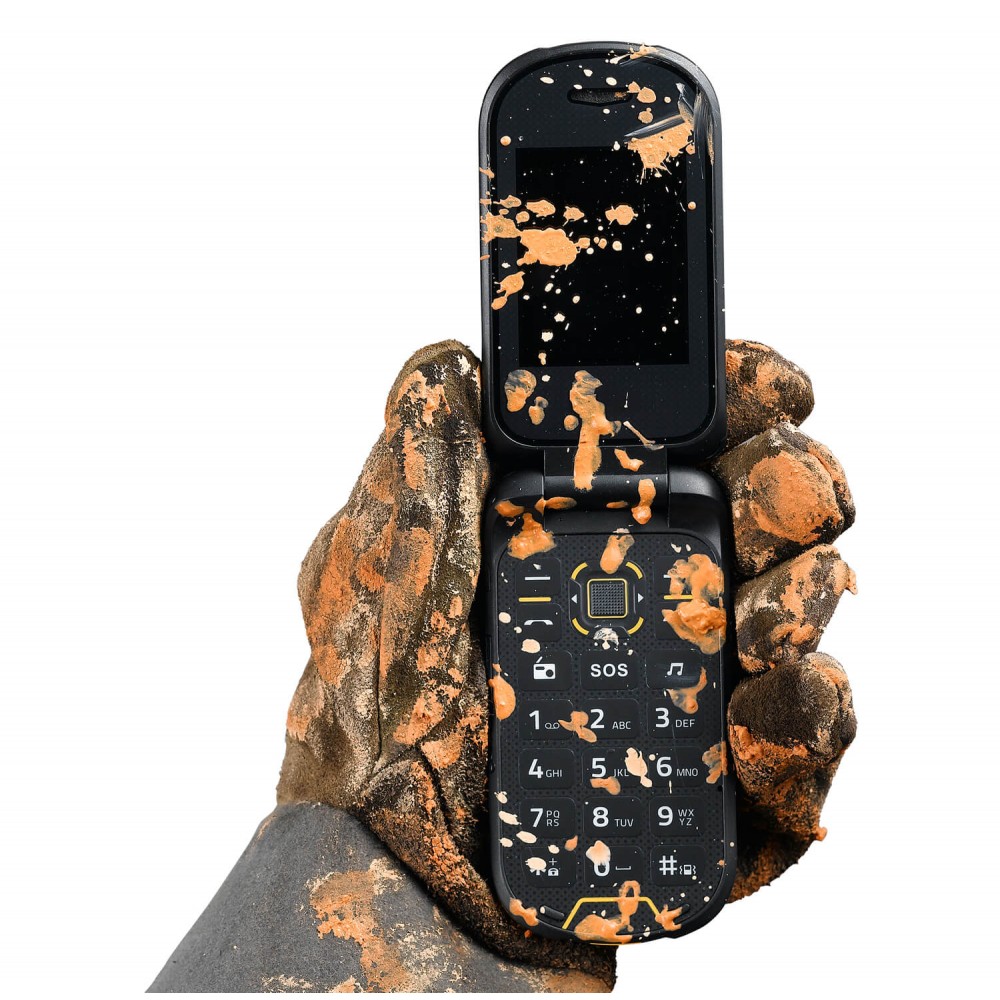
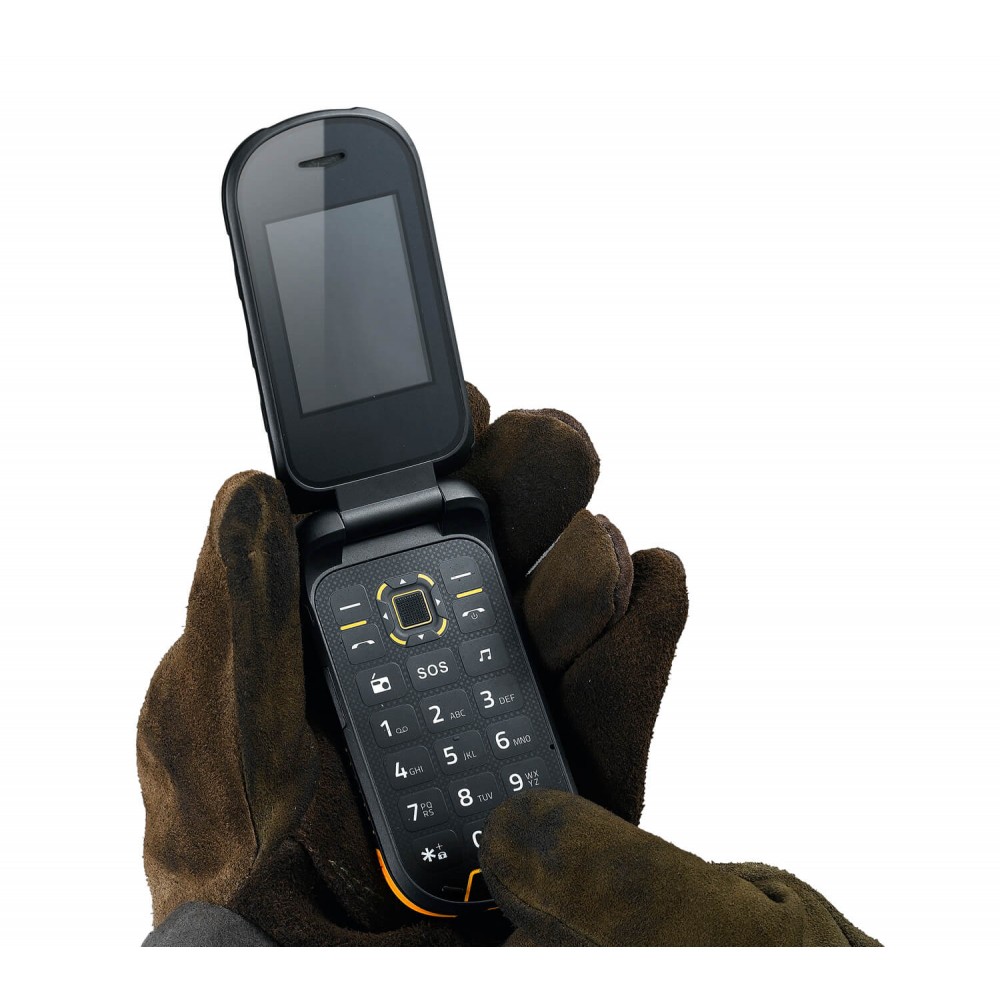
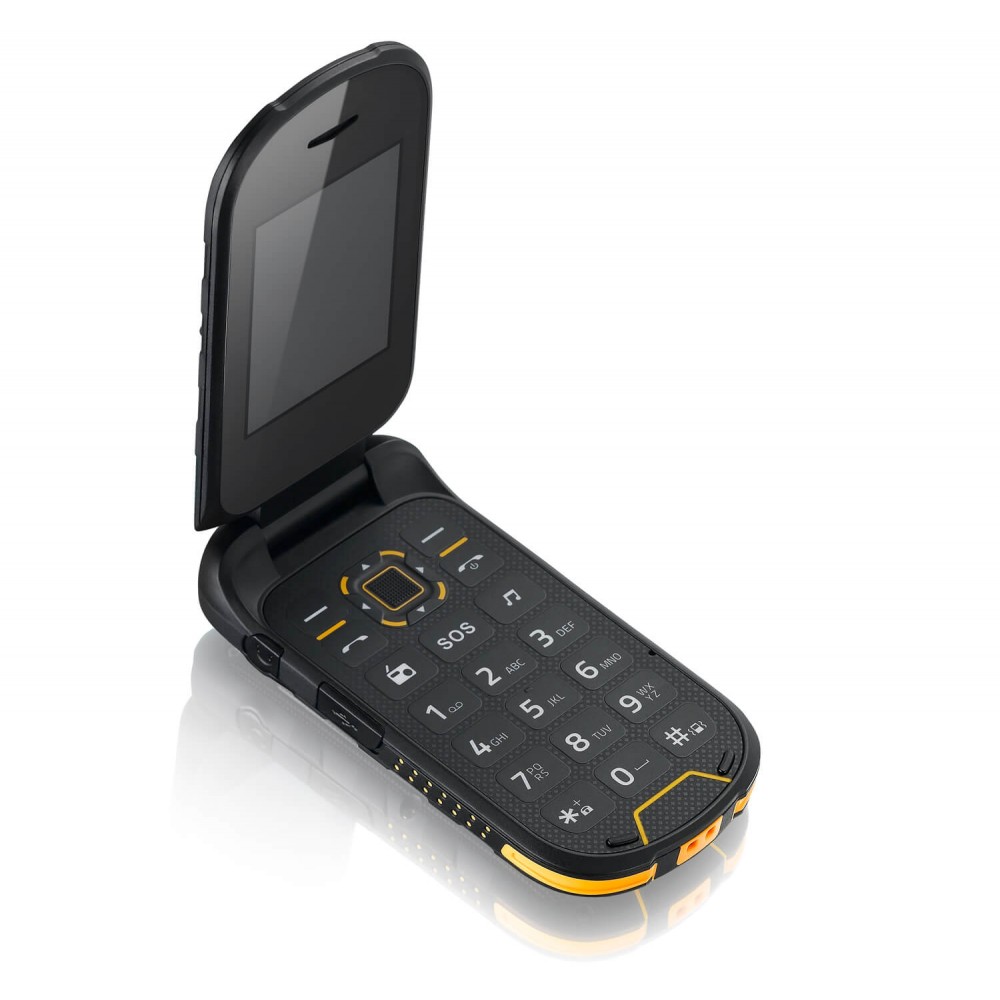
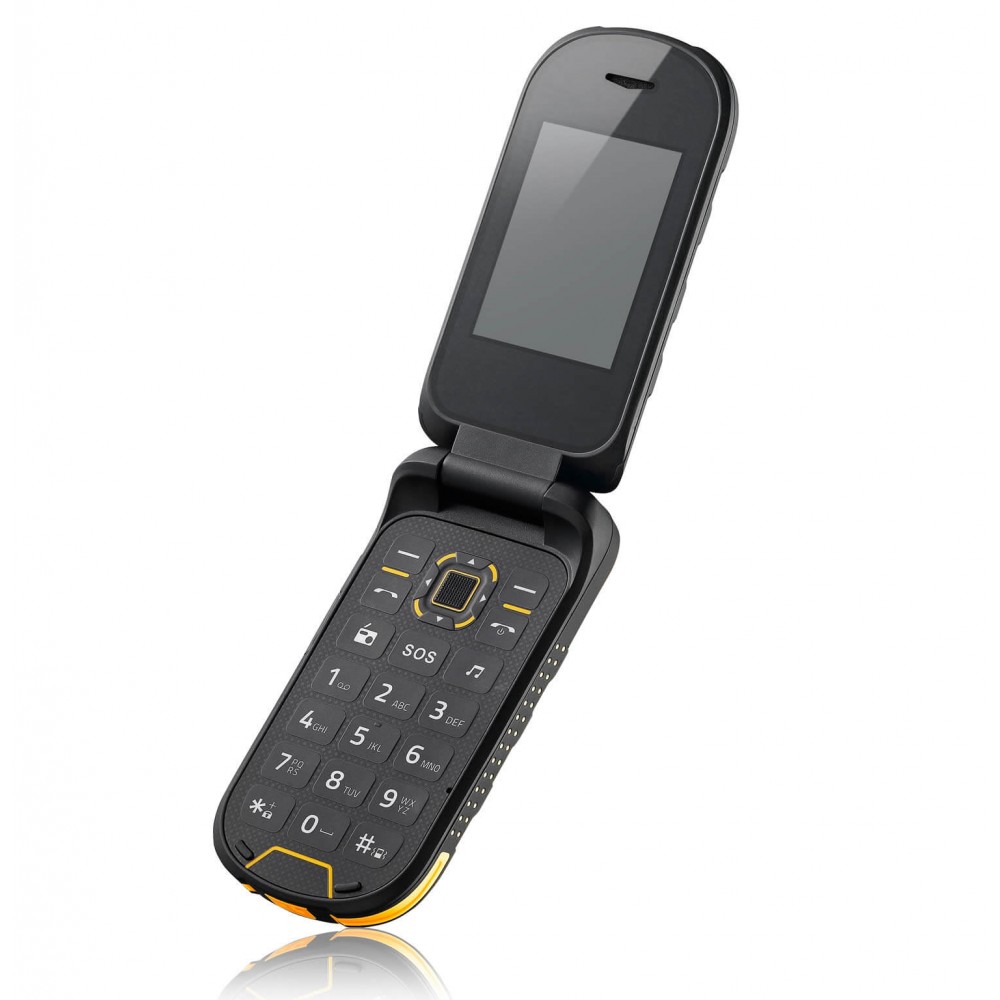
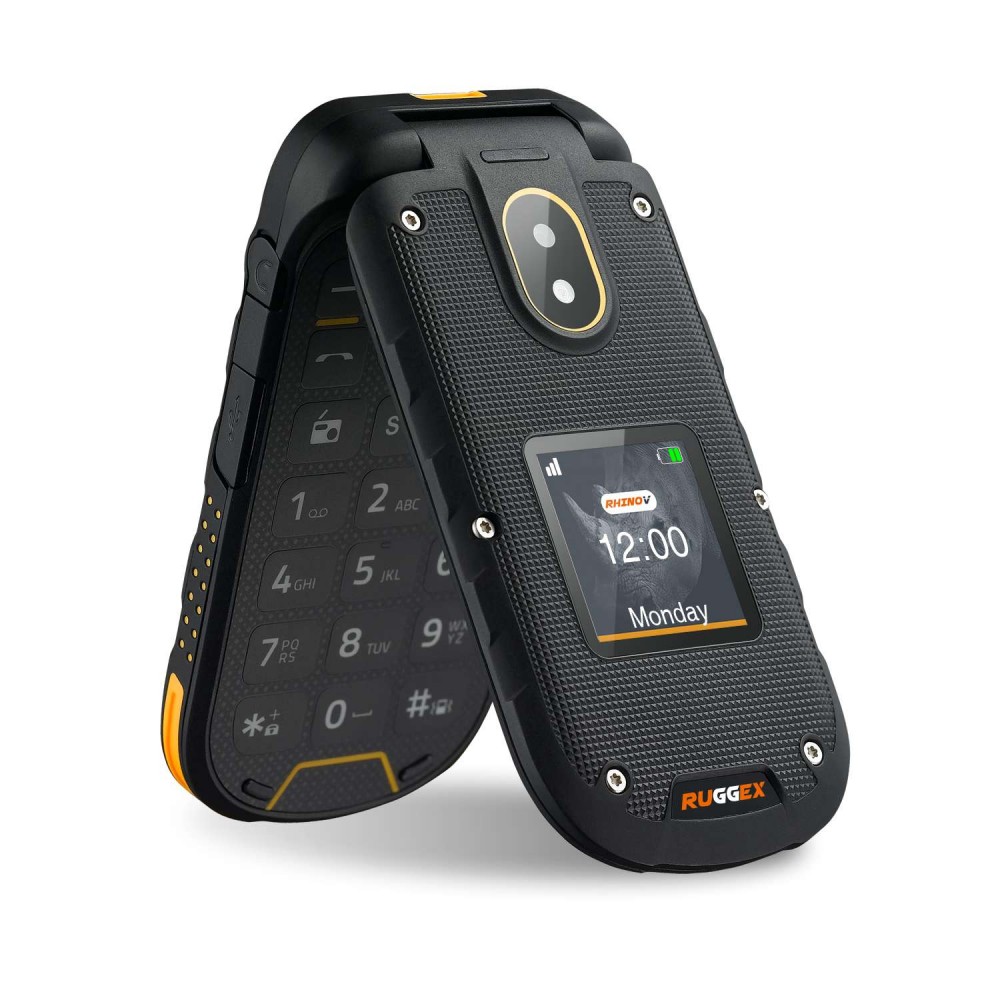
The Ruggex Rhino V 3G is a rugged clamshell (flip) phone built for users who need a simple, durable device. Released in February 2019, it offers essential features without the complexity of modern smartphones, making it a practical option for tough environments.
The phone is IP68-rated, which means it is dustproof and water-resistant, able to survive submersion in water up to 1.5 meters for 30 minutes. It measures 110 x 58 x 21 mm and weighs 110 grams, giving it a compact and lightweight form. The clamshell design provides added protection for the screens when closed.
The 2.4-inch IPS main display has a resolution of 240 x 320 pixels, offering clear visuals for basic use. The phone also features a 1-inch cover display, allowing you to view notifications like incoming calls and messages without opening the flip.
Powered by the MediaTek MTK6276A chipset and running on RTOS, the Rhino V 3G handles basic phone tasks efficiently. It comes with 64MB of RAM and 128MB of internal storage, which can be expanded up to 32GB using a microSD card.
The phone has a 2MP rear camera with LED flash, suitable for taking basic photos. It supports Bluetooth 3.0, Wireless FM Radio, and uses a Type-C v2.0 port for charging and data transfer. The device supports dual Nano SIMs with dual standby, allowing you to manage two lines at once.
The 1200mAh removable battery provides enough power for a full day of regular use. Since the battery is removable, you can easily replace it if needed. The table below contains the full specifications of the Ruggex Rhino V 3G.
| Launch This refers to the date when this device was officially introduced into the market. | 2019, January / Release 2019, February |
| Brand / Model These are key identifiers that indicate the manufacturer or company that produces this smartphone, and the specific model of the phone. | Ruggex / Rhino V 3G |
| 2G Bands 2G refers to the second generation of cellular technology and includes various frequency bands for basic voice and text communication. | 850 / 900 / 1800 / 1900 - SIM 1 and SIM 2 |
| 3G Bands 3G refers to the third generation of cellular technology, encompassing different frequency ranges for faster data speeds, mobile internet, and multimedia capabilities. | UMTS Band 1(2100), 8(900) |
| Ruggedity This indicates the device's durability and ability to withstand harsh conditions or impacts. It is a very popular term used with tough or rugged phones. IP68/IP69K are international ratings that measure a smartphone's resistance to dust and water. MIL-STD-810H is a military standard that sets criteria for the environmental and durability testing of electronic devices. It means this device has undergone various tests to demonstrate its resilience in challenging conditions, such as extreme temperatures, humidity, vibration, and shock. |
IP68 - Water up to 1.5m for 30m |
| Dimensions / Weight: This refers to the physical size and weight of the device, measured in millimeter (mm) and grams (g) respectively. | 110 x 58 x 21 mm / 110 grams |
| SIM SIM stands for "Subscriber Identity Module." It is a small card, typically inserted into a slot in a mobile phone, that contains important information for connecting the device to a mobile network. SIM cards can come in various sizes, including standard SIM, micro SIM, nano SIM, or even electronic (eSIM), depending on the phone's design. | Dual Nano SIMs; Dual Standby |
| Screen Display refers to the screen or visual interface of the device. It includes details such as screen size, resolution, and technology (e.g., LCD, OLED, AMOLED). |
IPS / 2.4-inches / 167 PPI + 1-inch cover display |
| Resolution Screen Resolution refers to the number of pixels that make up the display screen and is typically expressed as a combination of horizontal and vertical pixel counts (e.g., 1920 x 1080, 2560 x 1440, or 3840 x 2160). The screen resolution determines the level of detail and sharpness of the visual content displayed on the smartphone's screen. Higher resolutions generally result in crisper and more detailed images and text | 240 x 320 resolution |
| OS This is the Operating System. It refers to the software platform that runs on the smartphone and manages the device's hardware and software resources. Common smartphone operating systems include Android (developed by Google), iOS (developed by Apple). | RTOS |
| Chipset This refers to the integrated circuit that serves as the device's central processing unit (CPU). It plays a pivotal role in the smartphone's performance, speed, and energy efficiency. | MediaTek MTK6276A CPU |
| Memory This encompasses two components: storage capacity and RAM (Random Access Memory). Storage capacity, typically measured in gigabytes (GB) or terabytes (TB), dictates how much internal space is available for apps, files, and media storage. RAM, measured in gigabytes (GB), is temporary memory crucial for multitasking and app performance, with more RAM generally leading to smoother operation and faster task-switching capabilities. | 64MB RAM + 128MB ROM / + 32GB SD-card |
| Main The main camera, also known as the rear camera, is the primary camera on the back of the smartphone. It is typically used for capturing photos and videos in various scenarios and is often the more powerful and versatile camera on the device | 2MP single rear camera / LED Flash |
| Selfie The selfie camera, also known as the front-facing camera, is the camera on the front of the smartphone, primarily used for capturing selfies and video calls | None |
| Features Camera features encompass various functionalities and capabilities that enhance the device's photography and videography experience. These features can include Optical Image Stabilization (OIS) Panorama, HDR, Ai Mode, Night Mode, Portrait Mode, etc. | VGA |
| Connectivity This encompasses the device's ability to connect and communicate with other devices and networks. It includes features such as cellular connectivity, Wi-Fi, Bluetooth, NFC (Near Field Communication), and USB connectivity options. | Bluetooth 3.0 / Wireless FM Radio / Type-C v2.0 |
| Navigation Navigation refers to the device's ability to determine and display location information and provide directions to users. This functionality is usually powered by Global Positioning System (GPS) technology. | None |
| Sensors This refers to the various built-in sensors that enable the device to gather information from its environment and interactions. Common sensors found in rugged smartphones may include fingerprint sensor, light sensor, barometer sensor among others. | None |
| Battery This section refers to the device's power source and its related specifications. This typically includes details such as the battery capacity, measured in milliampere-hours (mAh) or watt-hours (Wh), and it charging details. | Li-Ion 1200mAh, Removable |
| Others This is a catch-all category that includes various additional features, specifications, or capabilities that don't fall under the major categories like display, camera, memory, or connectivity. |
LED Screen Notification (secondary screen Loud speaker Color: Black and Orange |
These specifications were entered manually, hence we CANNOT guarantee 100% accuracy. Also, that your device is listed on this website DOES NOT call for reckless usage! It is crucial to exercise due diligence, as we cannot be held responsible for any damage to your device due to overconfidence in it built quality.
Leave a Reply